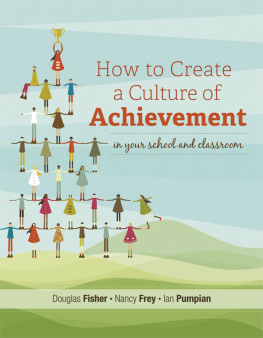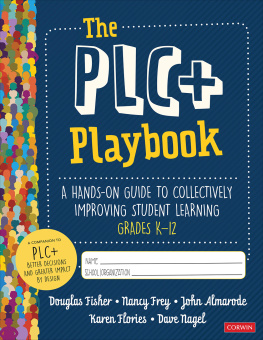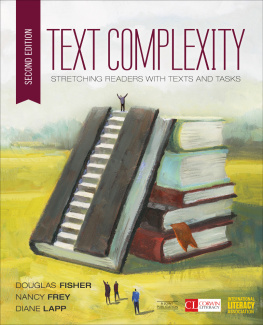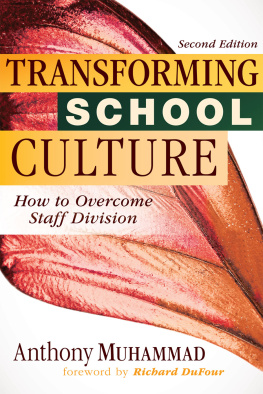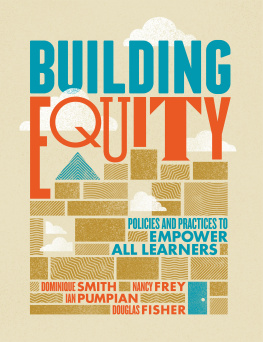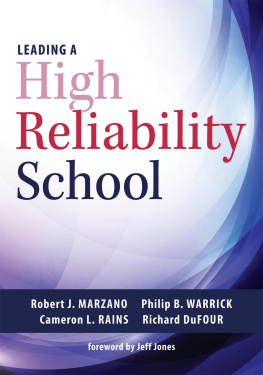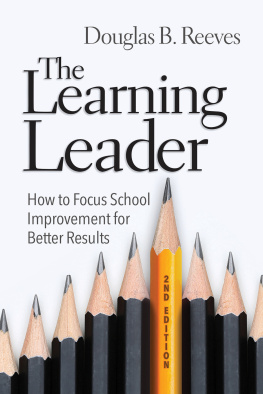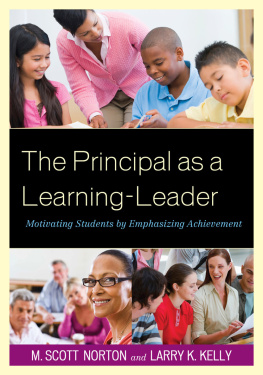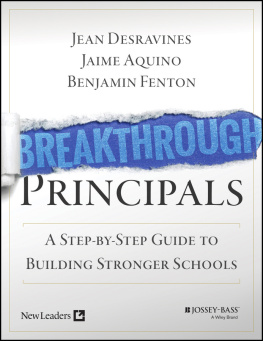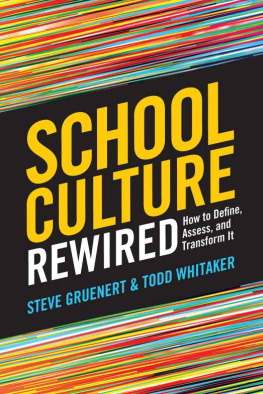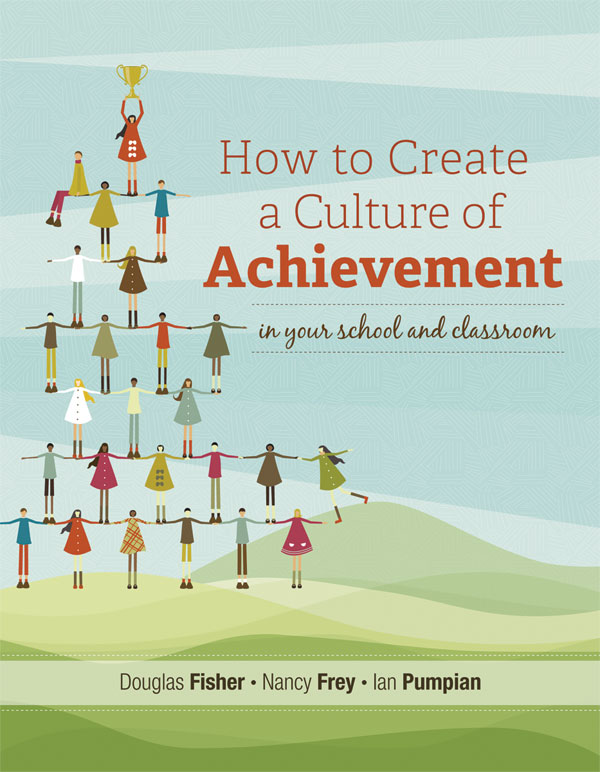Introduction
The part of a tree that we can readily see is above the surface. But because we understand that this living organism needs to sustain itself, we realize that there is just as much happening below. And we know that damaging its roots or poisoning its soil can result in the death of the tree.
A school's culture works in much the same way. There are things we can readily see; these are the procedures of the school. But we know that there are other elements below the surface, which serve to nurture the whole. These are our ways of work, and they speak to the relationships between and among people, as well as the ways we choose to inform ourselves. Margaret Wheatley (1998) describes the three elements that lie above the surface of an organization as its processes, structures, and patterns. We add tools to this list, as these are the ways an organization measures itself. All of these are easily seen and typically what people will first invoke when discussing a school's culture. But the underlying elements, those that are not readily observed, are equally essential, and include the relationships, identity, and connections (Wheatley, 1998). We add data to this list. These factors exist whether we choose to examine them or not. And as with any living organism, what happens both above the ground and below it needs to be cared for to sustain the school's culture.
The mission of the school should capture all of these elements, surface them, and integrate them. The mission is the starting point, not the ending point. Everyone involved in the schoolfrom parents and students, to teachers, staff, and administrators, to external auditors and community membersneeds to know the mission and how their work supports it. From the mission, schools and their leaders need a specified set of purposeful language, actions, and routines designed to make students and other stakeholders feel welcome, comfortable, important, and understood. They also need a specified set of purposeful language, actions, and routines that identify organizational systemspractices that build the culture of achievement. That's what this book is about: creating and implementing a system to operationalize the mission and, in doing so, ensure that students achieve.
Organizational Practices That Build Culture
This book will offer some suggested practices and structures to help schools get into a cycle of continuous improvement driven by mission, inspired by vision, and operationalized by culture. The practices are organized by pillars, or overarching ideas that communicate to stakeholders how the school's mission will be kept alive to thrive in the daily life of the school. We selected the term "pillar" because it is an architectural element that is designed to transmit weight within a structure. In other words, the pillars hold things up. Pillars are the structures that hold up the mission statement. They are the link between the mission statement and the ground on which people teach and learn.
Over the past several years, our collective experience in schools and our wide reading of business and education books have led us to identify five pillars that are critical to the culture of achievement that each of us hopes to build. These five pillars, each with a chapter devoted to explaining it, are as follows:
- Welcome
- Do no harm
- Choice words
- It's never too late to learn
- Best school in the universe
In chapters 2 through 6, each pillar is explained. We discuss why that pillar is important in building culture, and we provide examples from schools as the staff within the building has worked to implement that pillar. In addition, each chapter highlights practices and structures to ensure that the pillar becomes part of the daily practices within the school. These features include the following:
- Organizational principles, the specific components of the pillar that provide definitions and examples of quality implementation.
- Service cycles, a series of actions that staff understand are essential to operationalizing the school's mission and its pillars.
- Action research tools, a means to balance and align investment in reflective practice, responsive planning, and competent performance.
By examining what lies above the surface of a school's organization, we can expose what lies belowthe relationships, identity, culture, and data that are necessary to anchor and sustain the school. The image can be found in figure i.1.
Figure i.1. Above and Below the Organizational Surface
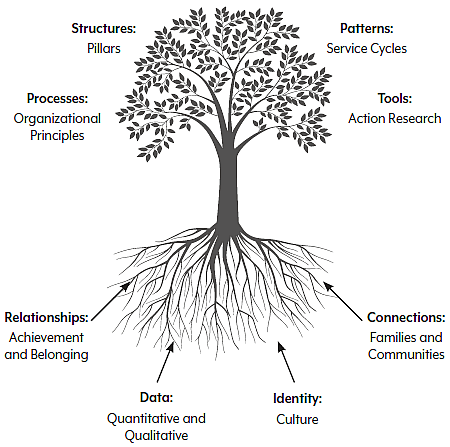
The collective power of a school community that turns its attention to building a culture of achievement cannot be underestimated. As with trees to be nurtured, the care and maintenance of our resources provides us with the shade we need.
Chapter 1
Creating Culture in Schools
An underground flow of feelings and folkways [wending] its way within schools in the form of vision and values, beliefs and assumptions, rituals and ceremonies, history and stories, and physical symbols. (Deal & Peterson, 1999, pp. 78)
This book proposes that effective organizations, including schools, should make building culture part of a planned strategic effort. Most school improvement plans concentrate on academic achievement goals, decisions about academic focus, deployment of instructional models, and teaching techniques and curriculum tools. Most school improvement plans therefore aspire to create academic focus, an academic sense of responsibility, intensity, and urgencythat is, an "academic press" (Lee & Smith, 1999). Academic press is absolutely necessary, but not sufficient to operationalize the mission of the school. We believe that no school improvement effort will be effective, maintained, or enhanced unless school culture and academic press are both addressed and aligned. Both developing school culture and creating academic press are necessary, but neither is in and of itself sufficient.
We suggest that these two elements of school effectiveness must be integrated and unified. Heretofore, researchers have referred to two curricula operating in the school. The first is the academic curriculum, which has been described as the objective, explicit curriculum of the school. The second is school culturethe implicit curriculum of the school. In this book, we propose that a school's culture should not be underground and assumed. It should be uncovered, openly and purposely discussed, assessed, and developed. School culture cannot be hidden and implicit; rather, it must be as explicit as our approach to teaching and learning. In fact, we propose that our academic press and our school culture should be looked at, thought about, and acted upon in a unified and coordinated manner.
Cultures are not created overnight or by pen and planning alone. Jerald (2006) argues that culture is born from an organization's vision, beliefs, values, and mission. Stating your mission is significant, but only a small part of your effort. Culture develops and grows up through an accumulation of actions, traditions, symbols, ceremonies, and rituals that are closely aligned with that vision.
According to Deal and Peterson (2009), research suggests that a strong, positive culture serves several beneficial functions, including the following:
- Fostering effort and productivity.
- Improving collegial and collaborative activities that in turn promote better communication and problem solving.

